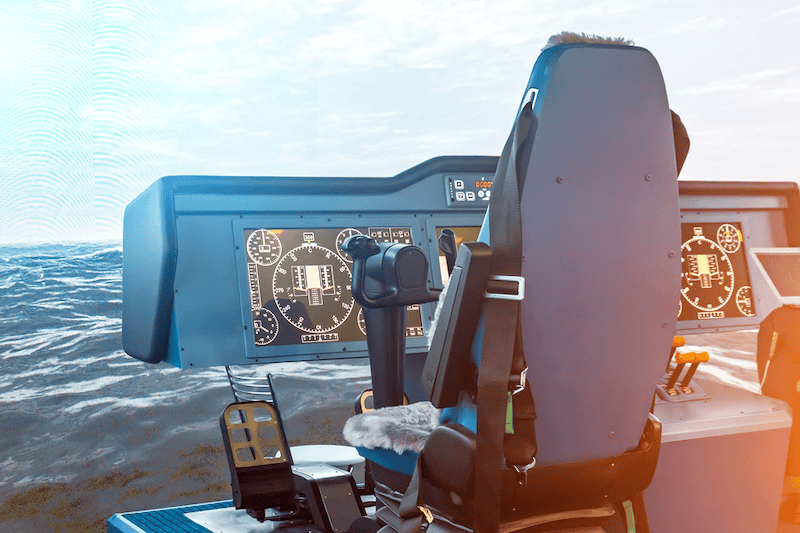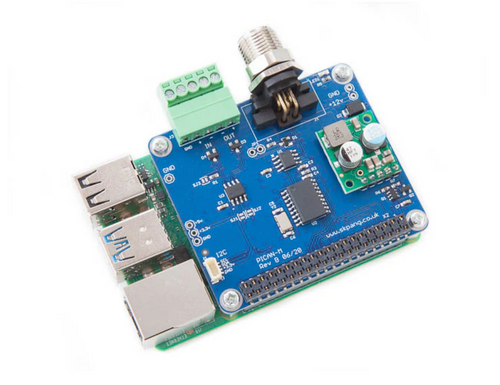Blog
Recent Posts
Embedded Systems Development for NMEA 2000
Posted by on
 Embedded systems development for the NMEA 2000 (National Marine Electronics Association) protocol presents unique challenges and opportunities in the field of marine electronics. NMEA 2000 is a standardized communication protocol designed to enable robust and reliable data exchange among marine instruments and devices. This essay explores the fundamental aspects of developing embedded systems for NMEA 2000, including its architecture, design considerations, challenges, and applications.
Embedded systems development for the NMEA 2000 (National Marine Electronics Association) protocol presents unique challenges and opportunities in the field of marine electronics. NMEA 2000 is a standardized communication protocol designed to enable robust and reliable data exchange among marine instruments and devices. This essay explores the fundamental aspects of developing embedded systems for NMEA 2000, including its architecture, design considerations, challenges, and applications.
Overview of NMEA 2000
NMEA 2000 is a Controller Area Network (CAN)-based protocol optimized for the marine environment. It supports high-speed data transfer and ensures interoperability among various devices, such as GPS receivers, autopilots, depth sounders, and engine monitors. The protocol defines standardized message formats called Parameter Group Numbers (PGNs), which encapsulate specific types of data.
NMEA 2000's architecture relies on a bus topology, where multiple nodes connect to a single backbone cable. This simplifies wiring and reduces the weight of cabling compared to older systems like NMEA 0183. With its 250 kbps data rate and multi-transmitter capability, NMEA 2000 provides a robust framework for integrating a wide range of marine devices.
Key Components of Embedded Systems for NMEA 2000
- Microcontrollers and Processors: At the heart of any embedded system is the microcontroller, which manages communication, processing, and control. NMEA 2000-compatible systems often use microcontrollers with built-in CAN controllers, such as the STM32 or Microchip PIC series.
- CAN Transceiver: A CAN transceiver translates signals between the CAN bus and the microcontroller. It ensures proper electrical signaling and robust communication over the NMEA 2000 network.
- Firmware: The firmware implements the NMEA 2000 protocol stack, including CAN message handling, PGN parsing, and data exchange logic. It ensures compatibility with the protocol’s specifications.
- Connectors and Cabling: NMEA 2000 requires specific connectors and cabling to meet marine standards for reliability and durability under harsh conditions.
Design Considerations
- Compliance with Standards: Developing NMEA 2000 devices mandates strict adherence to NMEA’s protocol specifications, including electrical, mechanical, and software requirements.
- Power Efficiency: Embedded systems in marine environments often operate on limited power sources. Efficient power management is crucial to ensure device reliability and longevity.
- Environmental Durability: Marine systems must withstand extreme conditions, including high humidity, saltwater exposure, and temperature fluctuations. Hardware design should incorporate waterproofing, corrosion resistance, and rugged enclosures.
- Interoperability: NMEA 2000 aims to enable seamless communication between devices from different manufacturers. Testing for compatibility is essential to ensure proper functionality within diverse system configurations.
- Real-Time Performance: Marine applications demand real-time data processing for critical functions such as navigation and engine monitoring. Embedded systems must prioritize low latency and high reliability.
Challenges in NMEA 2000 Development
- Licensing and Certification: NMEA 2000 development requires certification and licensing from the National Marine Electronics Association, which involves rigorous testing and compliance checks.
- Complex Protocol Implementation: Implementing the NMEA 2000 stack, including PGN handling and network management, requires a deep understanding of the protocol.
- Debugging and Diagnostics: Diagnosing issues on a CAN-based network can be challenging due to its distributed nature. Developers often rely on specialized tools like CAN analyzers and protocol simulators.
- Resource Constraints: Embedded systems operate under strict resource constraints, including limited memory and processing power, necessitating efficient code optimization.
Applications of NMEA 2000 Embedded Systems
- Navigation Systems: GPS receivers and chartplotters use NMEA 2000 to share location and route data with other onboard devices.
- Engine Monitoring: NMEA 2000 enables real-time monitoring of engine parameters such as RPM, temperature, and fuel consumption, facilitating predictive maintenance.
- Autopilot Systems: Autopilot devices use NMEA 2000 to receive heading and navigation data, enabling precise vessel control.
- Environmental Sensors: Weather stations and depth sounders use the protocol to provide critical data for safe navigation and decision-making.
- Entertainment and Lighting: NMEA 2000 integration extends to non-critical systems, such as audio-visual equipment and lighting, enhancing onboard comfort and convenience.
Future Prospects
As marine technology continues to evolve, the role of NMEA 2000 in embedded systems development will expand. Emerging trends such as the Internet of Things (IoT) and machine learning offer opportunities for enhancing data analytics, automation, and remote monitoring in marine systems. Furthermore, advancements in hardware and software tools will simplify the development process, making NMEA 2000 accessible to a broader range of developers.
In conclusion, embedded systems development for NMEA 2000 is a dynamic and technically demanding field. By addressing its unique challenges and leveraging its robust framework, developers can create innovative solutions that enhance the safety, efficiency, and enjoyment of marine activities.
 PICAN-M - NMEA 0183 & NMEA 2000 HAT For Raspberry Pi
PICAN-M - NMEA 0183 & NMEA 2000 HAT For Raspberry Pi
The PICAN-M (M = Marine) is a Raspberry Pi HAT with NMEA 0183 and NMEA 2000 connections. The NMEA 0183 (RS422) port is accessible via a 5-way screw terminal.
The NMEA 2000 port is accessible via a Micro-C connector.
Please be aware that this board cannot be powered via the NMEA 2000 connection because it lacks an onboard power supply. However, a version with a power supply (SMPS) is available.
Literature on Maritime Electronics, Including NMEA 2000
Replacing Your Boat's Electrical System The electrical system on a boat is crucial for the operation of all manner of valuable and critical equipment, yet a simple failure or weakness can render these systems inoperable. In older boats, fatigued or damaged wiring can be problematic or even terminal, so Mike Westin shows how to replace a [...]
OBD-II and the Hacking of Automotive CAN Bus Networks
Let me clarify: this is not a guide to hacking automotive networks. Instead, I attempt to dismiss some common misconceptions about OBD-II and its supposed ability to control a vehicle (Spoiler alert: It cannot). As someone who has spent considerable time studying and working with CAN Bus technologies, I think it is time to set [...]
ECU and GPS Modules with CAN, CAN FD, SAE J1939 Connections
PEAK-System presented several innovative I/O products with Classical CAN and CAN FD connections in this year's Embedded World trade show. The versatile control unit PCAN-MicroMod FD ECU integrates customer-specific accessories for automotive applications. For this purpose, the device offers a CAN FD connection and a combination of analog and digital I/Os. The I/O processing and message [...]
Telematics Gateway for Real-Time SAE J1939 or ISOBUS Data Monitoring
The CANUp telematics gateway by Technoton measures the operational parameters of vehicles and equipment and reports their performance. The core feature of the CANUp gateway includes the utilization of edge/fog computing methods, which detect 10,000+ possible parameters of vehicle or equipment operation and send generated operation reports to a web-based telematics server and directly to a user via [...]
Multi-Functional Telematics Gateway Processes SAE J1939, ISOBUS Parameters For Predictive Maintenance
The CANUp telematics gateway by Technoton represents a multi-functional telematics unit for use in advanced machinery telematics systems. Advanced machinery includes mobile and stationary objects, which have many operation monitoring parameters for engines, power generators, boilers, various additional equipment, and other assemblies. The core features of the CANUp telematics gateway include: Reading over 10,000 machine operation parameters, thus the [...]
Powertrain Diagnostics Platform For Engine Development Comes With Two CAN FD Interfaces
Kistler introduced its Kibox2, a modular and extendable powertrain diagnostics platform for engine development. The Kibox2 is equipped with two CAN FD interfaces for reading data from the vehicle network. The diagnostic platform is suitable for standard, electric, and hybrid powertrain analysis. It allows time- and angle-based data recording, real-time calculation of combustion parameters, limit value monitoring, [...]
Vehicle Computer Architectures Help Improving Diesel Engine Performance And Lifetime Costs
Engineers are leaving no stone unturned in their unceasing drive to improve fuel economy, leveraging electronics, monitoring airflow, and using data from outside the vehicle. Computer architectures are being revised to simplify controls and decrease sensor counts, helping keep costs in line. Computers continuously monitor and control the engine, transmission, after-treatment systems, and more. Powerful devices [...]
Embedded Application ECU For Telematic And Diagnostic Tasks With Up to Four CAN Bus Ports
Sontheim Industrie Elektronik (SiE) introduced its Comhawk xt telemetry module series for networking and data processing, which meets the latest technological standards. The connectivity and data management module is a member of the company’s Comhawk product family. Equipped with a Cortex A9 single/dual core processor and a storage capacity of up to 1 GiB RAM 64 GiB [...]
2G/3G Rapid Prototyping With ARM Mbed Enabled Internet Of Things Development Kit
The u‑blox C027 application board is an out‑of‑the‑box rapid prototyping solution for IoT (Internet of Things) applications that support GSM, UMTS and CDMA networks. The development board holds a MAX‑M8Q GPS/GNSS receiver and a LISA UMTS/CDMA or SARA GSM cellular module, enabling straightforward development of location‑aware, global communicating applications. For an even more natural development, the C027 incorporates [...]
 Loading... Please wait...
Loading... Please wait...
